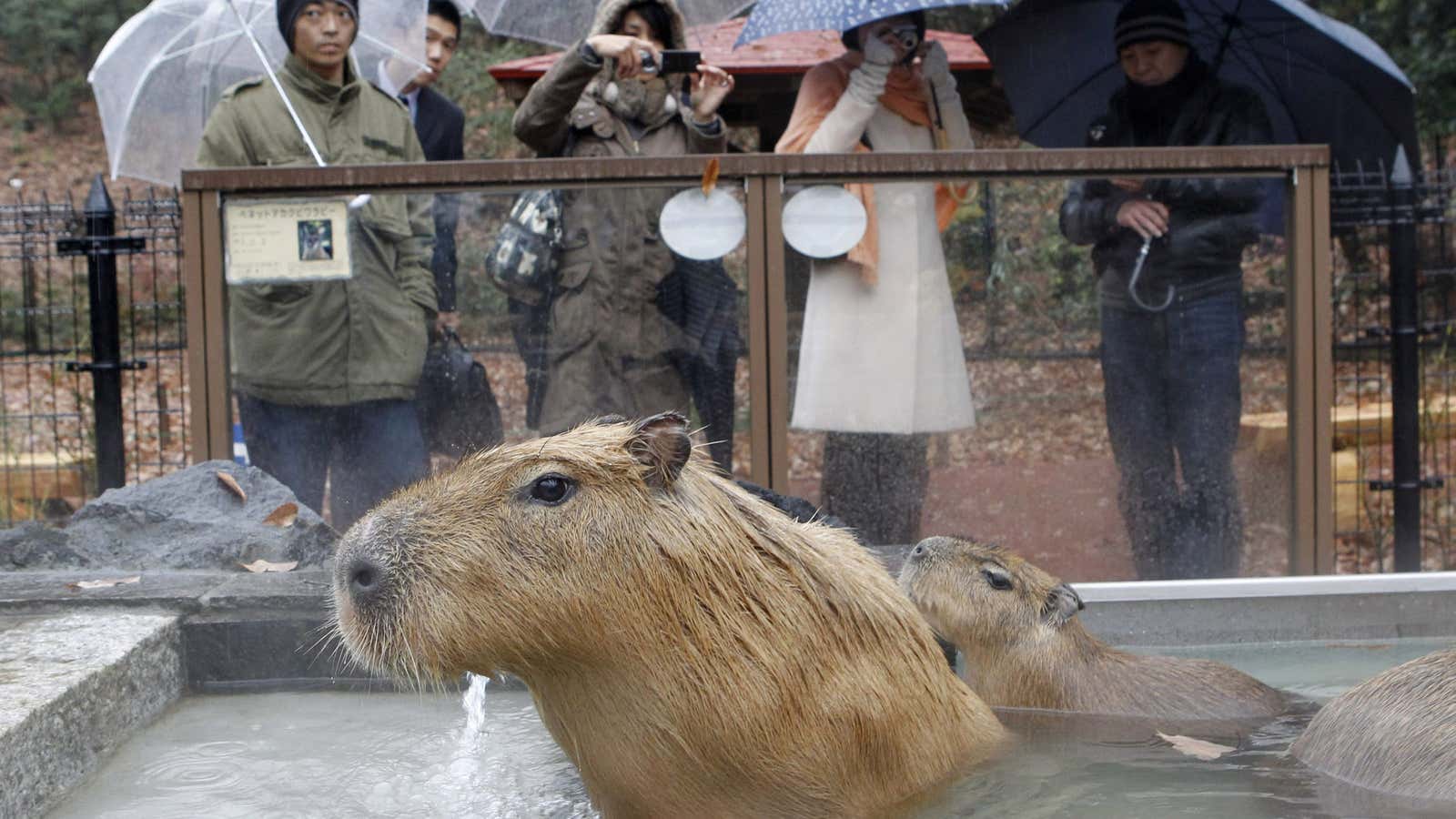They chill out in open-air hot springs in the winter, they’re widely available as cuddly plush toys, and aficionados lovingly curate their photos on social media.
Capybaras are typically described as the “world’s biggest rodent,” but their murine roots are rarely spoken of in Japan, where they are arguably the country’s favorite animal. According to recent data from the Japanese Association of Zoos and Aquariums, the number of capybaras kept in facilities around Japan increased to 422 in 2016 from 125 in 2006, far outstripping the growth in the number of animal parks. Capybaras, which are native to South America, can now be found in 59 parks across Japan, according to the association, up from 21 in 2006.
Katsuhito Watanabe, a capybara photographer in Japan, told Quartz that capybaras have been kept in zoos in Japan since the early 1960s. But how an animal that calls the tropical jungles of South America home became a bathing superstar in Japan is often attributed to one park in particular: Izu Shaboten Zoo in Shizuoka prefecture. The zoo pioneered the practice of keeping capybaras in hot springs, or onsen, in the winter. According to the zoo (link in Japanese), in 1982 a worker was cleaning an exhibition area with hot water when he found that a group of capybaras had congregated around a small pool of hot water, thus discovering that capybaras could survive the Japanese winter if zoos provided onsen for the critters.
Today, capybaras can be found soaking in hot springs in zoos all around Japan. There was even a capybara bathing competition earlier this year held in four animal parks in Japan to see which capybara could sit in an onsen for the longest, after the parks in 2015 signed a ”capybara open-air-onsen agreement” to promote capybaras in Japan (link in Japanese). They also organized a watermelon speed-eating contest for capybaras in 2016—won by a rodent in Nagasaki Bio Park, also known by some as the “Holy Land of capybaras.“
No animal is complete without its own cute character in Japan—and capybaras have Kapibara-san (link in Japanese). By one estimate, over 5,000 items (link in Japanese) now bear the face of the character, which was launched in 2005. According to Kapibara-san’s owner, toy giant Bandai, capybaras are known for their ”happy, natural, and easygoing lifestyle” and loved for their healing effect on humans.
In the US, however, capybaras aren’t enjoying quite the same hallowed reputation. In Florida, for example, authorities recently warned that capybaras could become a hazardous invasive species that could damage crops, after some escaped from captivity in the 1990s.
